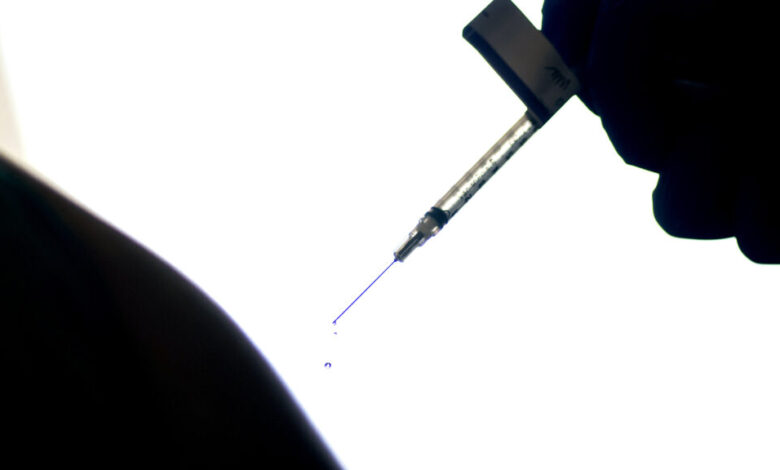FDA gives Covid vaccine manufacturers instructions for next fall’s shot

The Food and Drug Administration has issued new guidance to Covid vaccine manufacturers regarding the strains that next fall’s vaccines should target. The FDA advised that the vaccines for use in the United States beginning in the fall of 2025 should be monovalent JN.1-lineage-based Covid-19 vaccines, with a preference for the LP.8.1 strain, which is currently circulating broadly.
The decision comes after a meeting of the Vaccines and Related Biological Products Advisory Committee, during which members debated whether manufacturers should update their vaccine targets for the fall. While there was a split in opinions among committee members, a unanimous vote was taken to target a JN.1 version of the SARS-CoV-2 virus for the 2025-2026 vaccines.
The World Health Organization had previously recommended manufacturers to either stick with JN.1 or KP.2 strains of the virus or update to LP.8.1. The European Medicine’s Agency also recommended moving to production with the LP.8.1 version of the virus.
Some concerns were raised during the meeting about potential delays in vaccine delivery if manufacturers were required to update the strains targeted. Additionally, a new Covid vaccine regulatory framework proposed by FDA Commissioner Marty Makary and Vinay Prasad suggested that going forward, Covid vaccines may only be available to high-risk individuals, such as those who are 65 or older or have underlying medical conditions.
The framework also suggested that manufacturers may be required to conduct new randomized controlled trials in younger, healthy adults to assess the benefits of Covid vaccination. This could potentially delay the availability of updated vaccines. The FDA has not yet indicated if immunogenicity studies will be required for the updated vaccines.
Moderna and the Pfizer-BioNTech partnership, which use messenger RNA technology for their vaccines, seemed prepared to update to the LP.8.1 strain. However, Novavax, which requires more lead time for production, expressed a preference for sticking with the JN.1 virus used in their previous vaccine.
The meeting of the VRBPAC marked the first time since the start of the Trump administration that the committee had been allowed to convene. The committee was not consulted earlier in the year for the strains to be included in the next winter’s flu shot, with the FDA issuing orders based on a WHO-led meeting that occurred in February.
Overall, the FDA’s guidance on updating the strains targeted in next fall’s Covid vaccines reflects the ongoing efforts to adapt to the evolving nature of the virus and ensure the effectiveness of the vaccines. Manufacturers will need to carefully consider the implications of updating their vaccine targets and work towards timely delivery of the updated vaccines. In a recent meeting regarding Covid vaccine transparency, Monto, a professor emeritus at the University of Michigan’s School of Public Health, emphasized the importance of transparency. Prasad had already left the meeting, and Kaslow was non-committal, stating that the topic could be considered for a VRBPAC meeting in the future.
In other Covid vaccine news, the FDA made an announcement on Thursday regarding Pfizer and Moderna. They are now required to include expanded warning labels on their products to caution about the risk of a rare side effect known as myocarditis, which is an inflammation of the heart muscle.
Myocarditis has been predominantly observed in teenage boys and has also been reported in this demographic following Covid infection. Initially, the side effect was most commonly reported during the early stages of Covid vaccine distribution, particularly when individuals received two doses of the vaccine within a three to four-week interval. However, recent data presented to the expert panel advising the CDC on vaccines indicated a significant decrease in reports of myocarditis following Covid vaccination since 2021.
It is important to note a correction to a previous version of this story, which inaccurately stated that the European Medicines Agency allowed vaccine manufacturers to choose which version of the Covid virus to target.
These developments highlight the ongoing efforts to ensure transparency and safety in Covid vaccine distribution and administration. As more information becomes available, it is crucial for regulatory bodies and healthcare professionals to address any potential risks associated with vaccination while continuing to prioritize public health and safety.




